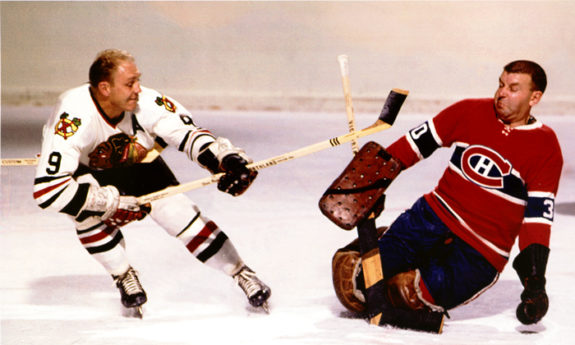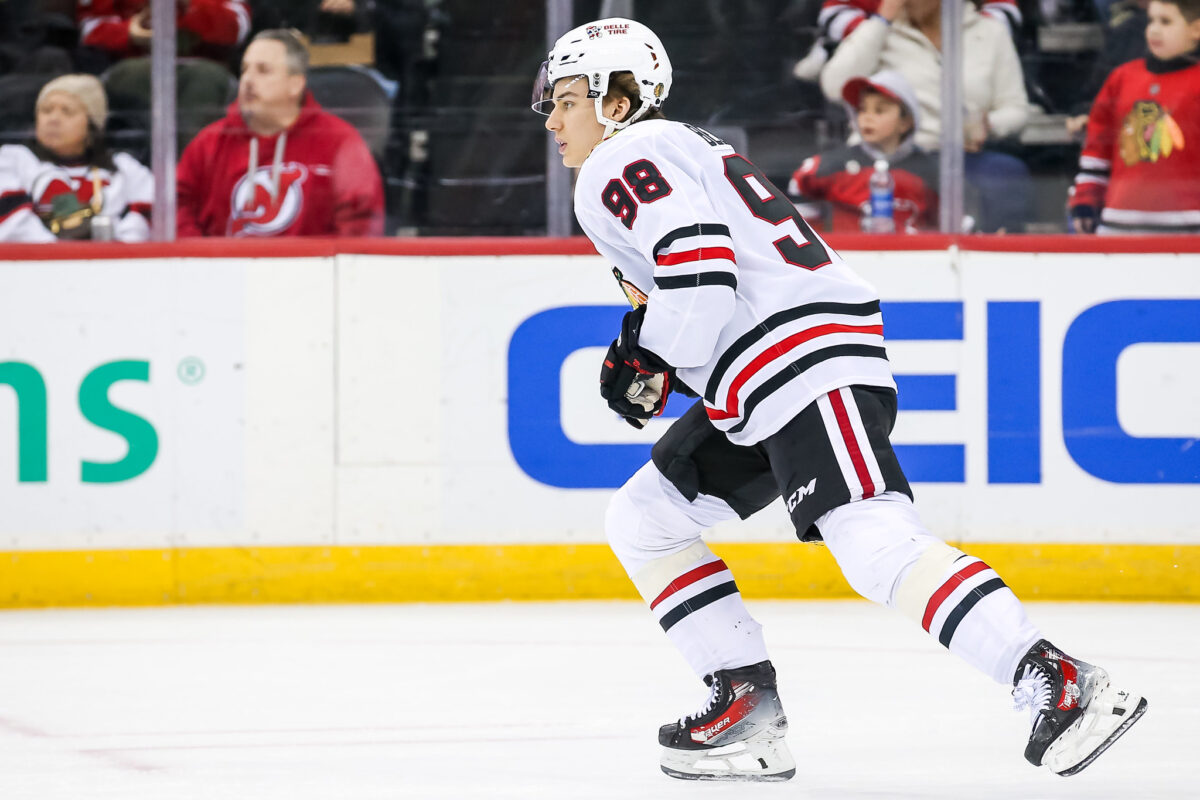In today’s world, there is sometimes a huge distinction between reality and social media, and the Chicago Blackhawks are very well aware of this. In the most recent trend to hit social media, some wonder why Connor Bedard does not wear some protective device and continue playing, much like Bobby Hull did in 1968 when he also suffered a fractured jaw.
This also came with reports and pictures of Bedard taking to the ice on Sunday (Jan 21), just one week after having surgery on his jaw. This led to the comments about Bedard following Hull’s route and returning to action immediately. These comments are easily dismissed as the social media craziness of people posting things and not realizing the differences between the NHL in 1968 and 2024. But as you think about the scenario, it does lead one to wonder what the thought process is and what the treatment for Bedard is as he recovers from his surgery.
It would be a good guess that if it were up to Bedard, he would be playing. Coaches, trainers, and teammates have already joked about how difficult keeping him off the ice has been. It might be wise for Bedard to consider what Hull went through back in 1968 while also assessing what the first-round pick will be doing as he recovers from his injury.
Hull Returned After Missing One Game
Hull had his jaw broken on Christmas day in 1968 when he was hit by an elbow from the Toronto Maple Leafs Mike Pelyk. He missed one game, then played six weeks with his jaw wired shut, using a crudely constructed helmet that had a football facemask attached. His doctor-approved treatment and subsequent nutrition plan was something that Hull called “brownish ugh” and consisted of three-fourths of a pound of ground beef, a cup of half-and-half, a can of barley soup, and half a cup of milk. All of this points out the fact that this was way before the development of a variety of helmets, which were not mandatory at that time, and the ability to get pre-packaged protein drinks.

About 12 years ago, I had a chance to meet Hull at a fundraiser. We were chatting about how the game is different today, including the medical knowledge of injuries that is known now, compared to when he played. Hull did tell us, “If I knew what everyone knows about injuries today, I probably would have made some different choices back then.” Part of the decision-making process of players of that era was partly based on their rough-and-tumble mindset, along with the lack of knowledge about the long-term effects that some of their injuries may have on them in the future.
When Hull returned to action, he did have to make adjustments. He talked about how he did not go “blasting” into the corners the way he usually did, and he had to keep his elbows up and people away from his face. His opponents did not let up on him, as evidenced by the altercation between himself and the scrappy John Ferguson of the Montreal Canadiens just 10 days after Hull suffered his injury.
So, as more common-sense medical decisions are made nowadays, Bedard will not be returning to action, full face shield or not.
Bedard’s Road to Recovery
Typically, surgery involving repair to a fractured jaw involves putting metal plates or bars on the broken area of your jaw. The plates or bars hold the bone in place to allow it to heal. According to the Cleveland Clinic, the surgeon may hold the jaw closed with wires or elastics to aid healing. During recovery, Bedard will probably be on a liquid diet for a few weeks and will have restrictions in place that will prevent him from using too much exertion in any activity that might cause re-injury, which is why there are many restrictions in place as the 18-year-old took to the ice.
During the recovery time, Bedard will not be allowed to take slap shots and will avoid any activity that may involve clenching the mouth, such as maxing out on weights or riding hard on the bike. His on-ice time has focused on skating, stick handling, and wrist shots. He did participate in non-contact passing and shooting drills. This is the only type of work Bedard will be allowed to do until he is cleared for contact. This is typical for hockey players recovering from this injury, much like the New Jersey Devil’s Dougie Hamilton went through when he suffered a similar injury in 2022.
Bedard’s Timetable to Return
In what is probably the most asked question that Luke Richardson has had in 2024, he once again reiterated that there is no timetable for Bedard’s return. It will be at least six weeks until they begin considering putting him back on the ice with no restrictions, which usually means the earliest recovery process is until the fracture is fully healed. Once that happens, the Blackhawks will then determine when he is game-ready. The thought is that it will not take someone who is a very healthy 18-year-old very long to get back to game speed.

Based on Richardson’s comments and the medical timetable for clearance, the earliest that Bedard could return is the Feb. 13 game against the Vancouver Canucks. The Blackhawk faithful will likely get the opportunity to see him in action at home, as the Hawks will play eight of their nine February contests at the United Center. If the NHL has any say in it, they would probably prefer the team to wait until the Philadelphia Flyers come to town on Feb. 21 for a nationally televised contest on TNT. If the Blackhawks want to be extra cautious, which some wonder may happen since the team is well out of the playoff hunt, ESPN would be happy if his return occurred on Feb. 29 when they host the Colorado Avalanche.
Related: Blackhawks Bytes Foligno Style: Bedard, Dickinson, More
Blackhawk Fans, and even Connor Bedard himself, would love to see the young phenom back in action sooner rather than later. However, even though we love to mention the toughness of players from a previous era, sound medical principles and common sense dictate that the Blackhawks exercise caution to keep their generational talent healthy for the long-term benefit of the player and the team.
